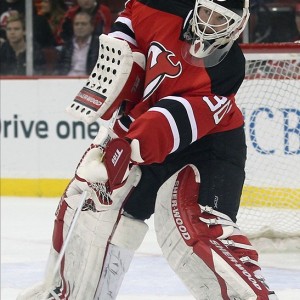Every sport has its share of outdated/silly rules, and the NHL is no different. Some of them were created due to individual players (see: Trapezoid Rule), while others never made any sense from the beginning (see: calling a dive and a penalty on the same play).
However, with these five tweaks, the NHL will be exponentially better.
Change the Point System
The current point system is ridiculous. The NHL wanted parity, and the current point system does that by rewarding loser points to teams who lose in overtime or shootouts. It also is inconsistent with the number of points rewarded per game. Some games award two points, while others award three.
The NHL should adopt a three-point system that rewards teams that go for regulation or overtime wins instead of settling for shootout wins, with each game awarding three points. Here’s how the NHL should implement a three-point system:
3 points for a win in regulation or OT
2 points for a shootout win
1 point for a shootout loss
0 points for a loss in regulation or OT
The teams on the playoff bubble at the end of the season will be aggressive and attempt to get the win in regulation or OT, rather than sitting on the tie and hoping to win in the shootout/skills competition.
Get Rid of the Trapezoid

The NHL implemented the trapezoid because of Martin Brodeur, one of the best puck-handling goalies. The NHL wanted to create puck battles in the corner rather than the goalie, namely Brodeur, clearing the zone with a well-timed pass.
However, if a goalie is good at handling the puck, why take that skill away from him? The teams that have goalies with superior puck-handling skills should be rewarded by being able to push the puck up the ice in order to generate offense. Besides, there always is the chance a goalie gets too aggressive or mishandles the puck, which leads to a turnover and an offensive opportunity for the attacking team.
Let Play Continue if the Puck Hits the Netting
Ever since the NHL added netting over the end boards for the 2002-03 season, the league made it out of bounds. If the puck flew over the glass and hit the netting, the play was called dead. Why should play stop? If a puck is shot over the net and hits the glass, play continues, so why should it be any different if the puck hits the netting?
The NHL doesn’t need additional reasons to stop play, keep the play going and give the attacking team a chance to score, which is what everyone wants more of anyway.
Get Rid of Offside Coach’s Challenges
The coach’s challenge for offside was a good idea in theory. The league implemented it to get rid of the egregious missed offside calls, like this one Matt Duchene scored on in 2013.
While the league made an effort to minimize human error, during the 2015-16 playoffs, it did so at the cost of slowing the game down. It also took away highlight reel goals, and again, the league is looking for more scoring, not less. And, as Greg Wyshynski noted, there are numerous calls during the course of a game that aren’t reviewable, so why make offside reviewable?
In a perfect world, referees would be robots with precision vision and never miss a call. However, there is human error in a game as fast as hockey. It’s not worth slowing the game down and taking goals off the scoreboard for the one egregious call the referees miss.
Eliminate Dive and Penalty Calls on the Same Play
I never understood this rule. How can a player be called for diving/embellishment while an opposing player is called for a penalty? Call one or the other. If the player dove or embellished, call diving or embellishment. If the player was tripped, call tripping. It’s simple.
It doesn’t make sense to punish both teams when only one needs to be punished.